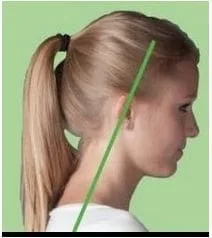
Many people are unaware that you have 27 bones in your hand and wrist that are supported by many ligaments and muscles. Your hands and wrists are functionally amazing considering the complexity.
When you use your hand, wrist and arm while they are positioned in a biomechanically incorrect position this will cause them to become compromised, weakened and ultimately they become injured. The tiny bones of the wrist and hand can actually lose their healthy alignment due to these unnatural movements. Abnormal stress on the elbow and shoulder can cause tendonitis and bursitis. When the bones and joints of the upper extremity become misaligned, it can cause irritation and stress to the muscles, tendons, joints, ligaments and nerves. This will result in a loss of healthy hand, wrist and arm function which may trigger symptoms such as pain, tingling, numbness, burning and even a reduction of finger and grip strength.
Keep in mind that it is not always a large, heavy task that causes the hands, wrists elbows or shoulders to develop a problem, but more commonly it is those smaller, more tedious or repetitive activities that can cause problems to occur.
With all of the rigors of life that we encounter on a daily basis, it is no wonder why so many people develop long-term chronic problems with their hands, wrists and arms. Some of the more common hand symptoms that can indicate an underlying biomechanical imbalance in the upper back, neck and upper extremity include pain, numbness, tingling, burning in the hand or arm or loss of grip strength.
Although there are many different causes of hand pain, numbness, tingling and other symptoms, most of the time the cause of the problem is related to biomechanical dysfunction of the entire upper extremity, upper back and neck. If you have been suffering with hand pain, numbness, tingling, loss of hand strength it is very important that you consult a properly trained healthcare provider that specializes in finding the root cause of your condition.
As with your wrists and hands, your elbows and shoulders are just as likely to develop problems from repetitive activities when your upper back, neck and shoulder are in a compromised biomechanical position. Have you ever heard of “Forward Head Posture”?

The best solution to restoring normal function, strength and health to your entire body is to consult one of the highly trained doctors at Advanced Spinal Rejuvenation today.
The doctors here at Advanced Spinal Rejuvenation are trained to evaluate and treat each patient for their specific condition. We focus on finding the true cause and developing a treatment plan that will solve the problem long term.
Because biomechanical and functional conditions of the hands and wrist, upper extremity, lower extremity and spine affect the entire body. We develop a treatment plan to correct the biomechanics and imbalances of each area of the body as they relate to each other. Unlike most treatment approaches, our technique addresses all of the components necessary to correct the problem: bone, joint, ligament, tendon, muscle and fascia as well as the neurological involvement.
Common Hand & Arm Conditions We Treat
- Carpal Tunnel Syndrome
- Median Nerve Entrapment
- Carpal Tunnel of Guyon Syndrome
- Ulnar Nerve Entrapment or Cyclist’s Palsy
- De Quervain's Tenosynovitis
- Hand Pain
- Wrist Pain
- Wrist/Hand Sprains
- Repetitive Strain Injuries
- Osteo-arthritis
- Tennis Elbow
- Golfer's Elbow
- Pronator Teres Syndrome
- Supinator Syndrome
- Radial Tunnel Syndrome
- Tendonitis
- Shoulder Pain
- Impingement Syndrome
- Rotator Cuff Injuries
- Thoracic Outlet Syndrome
Common Hand, Wrist, Elbow and Shoulder Conditions:
Carpal Tunnel Syndrome & Median Nerve Entrapment

Repetitive motions, stress, injuries and long term poor biomechanics of the upper extremity can cause the bones in the wrist that form the carpal arch (or carpal tunnel) to lose their healthy alignment or biomechanical function. This abnormal biomechanics will create pressure on the median nerve which will irritate and inflame the nerve. Eventually this will cause symptoms such as numbness, tingling and pain in the hand.
The good news is that carpal tunnel syndrome can be treated and corrected effectively without the need for surgery. In fact, even if surgery has already been attempted and failed to provide the patient with relief there is an option that is extremely beneficial in the majority of cases. This treatment will actually correct the underlying root cause of the condition.
Ulnar Nerve Entrapment
Ulnar nerve entrapment at the wrist is commonly misdiagnosed as carpal tunnel syndrome; however carpal tunnel syndrome involves the median nerve, not the ulnar nerve. Ulnar nerve impingement at the wrist is not as common as median nerve entrapment; however the underlying cause is of a very similar. Abnormal function and biomechanics at the wrist causes stress and pressure on the ulnar nerve leading to pain, numbness, tingling and other symptoms.
As with other wrist injuries and ailments, the underlying cause of the problem will not go away on its own or by using wrist braces or supports. However, the doctors at Advanced Spinal Rejuvination are trained to correct the abnormal biomechanics of the wrist through specialized adjustments and rehabilitation stretches and exercises.
Wrist Pain

Pain on the thumb side of the wrist is commonly the result of irritation and/or injury to the tendons that pass from the forearm muscles to the thumb to control certain thumb movements. This pain is commonly the result of a condition known as De Quervain’s tenonsynovitis. As the tendons glide through a small sheath on the thumb side of the wrist they become irritated and inflamed due to pressure from mechanical dysfunctions and misalignments of the tiny bones in the area of the wrist and thumb.
Thumb Pain

The point where the thumb attaches to the wrist is a very mobile and versatile joint as it can rotate in several planes of motion. This thumb joint is one of the first joints in the entire human body to become affected by osteoarthritis. This is because as this joint becomes overused with all the activities of daily living it will lose it’s healthy alignment sooner than the other joints of the hand and other parts of the body. As a result the cartilage surrounding this joint will be exposed to wear and tear sooner than other joints.
The underlying problem that leads to arthritis of the thumb in many cases may become present in early to middle adulthood. When injuries or repetitive activities cause thumb joint stress or restrictions it is important to have any bone misalignments corrected sooner rather than later. Correcting thumb and wrist joint misalignments soon after they occur is especially important if you have a family history of arthritis.
Arthritis

Ganglion Cysts
Ganglion Cysts are small fluid-filled cysts (aka synovial cysts), that develops near a misaligned joint. When a hand or wrist bone loses its healthy alignment due to repetitive or strenuous activities it can irritate the synovial lining of the nearby joint. This irritation can cause a small amount of fluid to build up into a cyst-like formation. These ganglion cysts are usually visible and may increase in size over time. Sometimes there is pain associated with a synovial cyst and other times they are pain-free.
Because these small cysts develop due to stress to the joint tissues from bone misalignments they will usually resolve and diminish in size and many times they will even disappear completely once the healthy alignment has been restored to the nearby joints.

